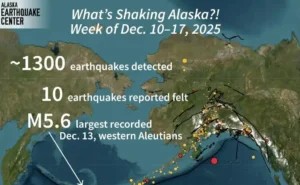Alaska officials responded to a Red Dog Mine water spill after a pump failure released treated water into the surrounding tundra and creek. The Alaska Department of Environmental Conservation confirmed that approximately 400,000 gallons of treated process water were spilled early Wednesday morning.
A failed slurry pump at Red Dog Mine caused the incident with water escaping the mill and flowing into nearby containment areas. Most of the spill reached a designated gravel road and controlled basin, but some entered the creek and the open tundra.
Officials estimate between 100 and 1,000 gallons flowed beyond containment, reaching thawed tundra and open water in Red Dog Creek. Teck Alaska, the company that operated the mine, said only a small volume entered the creek, and cleanup began immediately afterward.
Teck built dikes and berms to prevent the further spread of contaminated water and quickly notified community, corporate, and regulatory stakeholders. Company crews used vacuum trucks to remove processed water from the orad and tundra to prevent it from seeping outward.
Officials said recovered water and contaminated soil will return to the mining cycle through regular processing and environmental safeguards. Teck, the US Environmental Protection Agency, and state officials have formed a unified command to coordinate cleanup and mitigation efforts.
Staff first detected the spill just over an hour after it occurred, and they quickly worked to control it. Regulators will test the impacted water and soil for heavy metals that may affect local wildlife, including lead and zinc.
Red Dog Mine lies 80 miles North of Kotzebue on land owned by NANA, the local Alaska Native regional corporation. Kimberley Maher, Alaska´s on-scene coordinator, said the creek remains unfrozen, and migratory birds have not yet arrived this spring.
She confirmed that no injuries occurred, and wildlife, including caribou, brear, and grayling, has not yet shown signs of harm. The total spill volume equates to nearly two-thirds of an Olympic-sized pool, but prompt response efforts helped contain it.
State and federal environmental teams will continue monitoring impacts and analyze samples from affected areas to determine potential ecological consequences. Although officials have seen no immediate wildlife effects, the spill prompted serious attention from multiple agencies.












